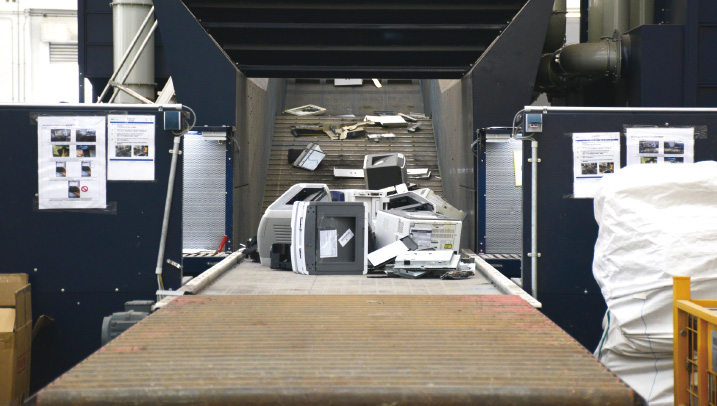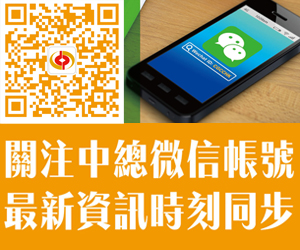The rapid development of digital technology has resulted in the production of a large amount of e-waste. At present, about 70,000 tonnes of e-waste are generated in Hong Kong annually, about 85% of which are regulated electrical equipment (REE, i.e., air-conditioners, refrigerators, washing machines, televisions, computers, printers, scanners and monitors). With the tightening of import control over waste electrical and electronic equipment (WEEE) in other jurisdictions, Hong Kong desperately needs a set of consistent and effective solutions that can properly dispose of its e-waste, and convert them to useful resources and create business opportunities.
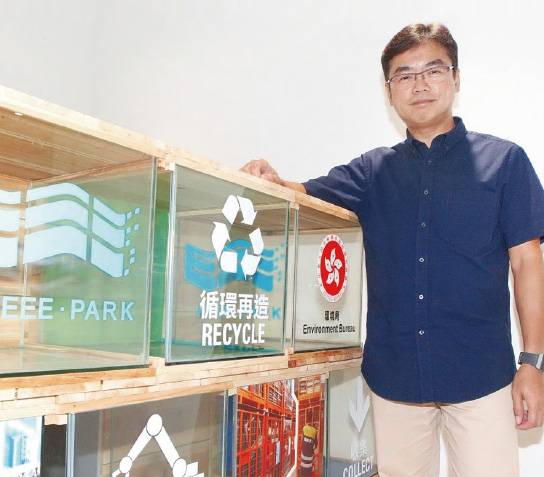
For the long-term effective management of e-waste in Hong Kong, the HKSAR Government commissioned ALBA Integrated Waste Solutions (Hong Kong) Ltd (ALBA IWS) to develop an integrated solution which includes collection and the design and building and operation of WEEEPARK, a treatment and recycling facility located on a 3-hectare site at EcoPark, Tuen Mun. Vincent Cheng, Chief Technical Officer of ALBA IWS, said that the facility adopts advanced technologies to turn regulated WEEE into secondary raw materials through a series of collection, sorting, dismantling and shredding processes. The hazardous components contained in WEEE are put through detoxification in the process.
Huge treatment volume drives circular economy
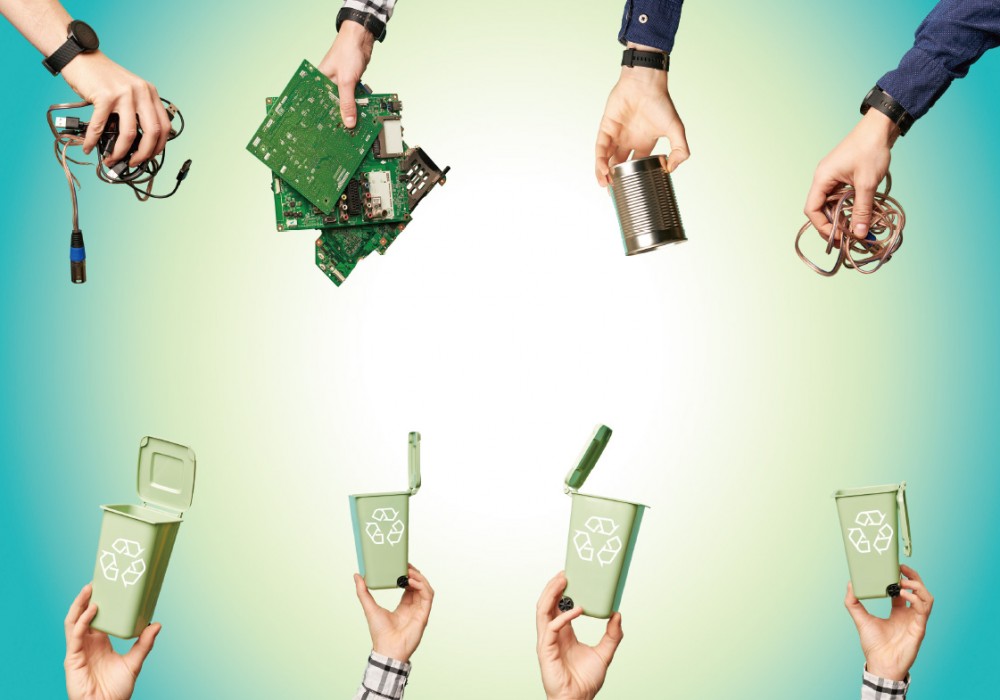 “REE are large electrical appliances that contain harmful materials such as lead, mercury and gases with a high global warming potential. Direct landfill disposal will lead to serious environmental problems, increase pressure on landfills and is a waste of valuable resources. They may cause harm to the environment and human health if not properly treated or disposed of. The establishment of WEEEPARK showed the Government’s determination to drive the development of the recycling industry and promote the local circular economy.”
“REE are large electrical appliances that contain harmful materials such as lead, mercury and gases with a high global warming potential. Direct landfill disposal will lead to serious environmental problems, increase pressure on landfills and is a waste of valuable resources. They may cause harm to the environment and human health if not properly treated or disposed of. The establishment of WEEEPARK showed the Government’s determination to drive the development of the recycling industry and promote the local circular economy.”
The park has a design capacity of 30,000 tonnes per year, which, if required, can be expanded to 57,600 tonnes by extending the operating hours. “Our recycling rate is as high as 87%. Useful materials such as plastics, copper and iron can be turned into raw materials for factories to make other products, while materials that are otherwise disposable can be converted to useful raw materials after treatment.”
Using polyurethane (PUR), the insulating material for refrigerators, as an example, Cheng said that the foam-like chemical material could have been discarded after being extracted from the refrigerators and treated at the facility, but thanks to the joint efforts of the facility and the Government, a total of 108 tonnes of PUR was sent to Green Island Cement for use as an alternative fuel last year.
Free door-to-door collection service improves recycling rate
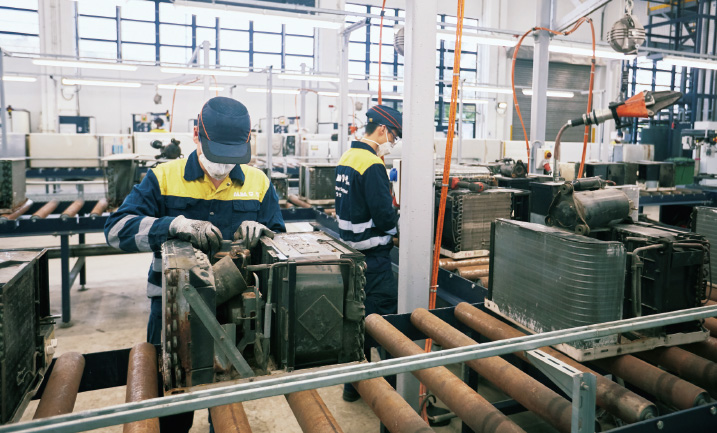 At present, suppliers are required to register with the Environmental Protection Department (EPD) and pay a recycling levy ranging from HKD15 to HKD165 per product before they can distribute REE to sellers. A member of the public is entitled, upon purchasing a REE, to ask the seller to arrange for delivery of the new item and removal of the used item of the same class on the same day at no extra charge. According to Cheng, a member of the public can make an appointment for a free door-to-door collection service through ALBA IWS’s recycling hotline 2676-8888 even if he/she has not purchased a new REE, “I believe that the free door-to-door recycling service is only available in Hong Kong, as I have not seen other cities or regions that offer similar services.”
At present, suppliers are required to register with the Environmental Protection Department (EPD) and pay a recycling levy ranging from HKD15 to HKD165 per product before they can distribute REE to sellers. A member of the public is entitled, upon purchasing a REE, to ask the seller to arrange for delivery of the new item and removal of the used item of the same class on the same day at no extra charge. According to Cheng, a member of the public can make an appointment for a free door-to-door collection service through ALBA IWS’s recycling hotline 2676-8888 even if he/she has not purchased a new REE, “I believe that the free door-to-door recycling service is only available in Hong Kong, as I have not seen other cities or regions that offer similar services.”

The public has become markedly more conscientious along with the increase in social awareness of environmental protection. At present, about 10,000 members of the public inquire or make appointment calls every month on average, showing an enthusiastic response, “There are seasonal peaks in the recycling volume, e.g., the recycling of air conditioners increases significantly in summer, and the recycling rate also rises just before the Lunar New Year, when people replace old items with new ones.” Cheng is convinced that this service can achieve eco-friendly recycling and relieve the public of the trouble of disposing of old REE themselves or at their own expense, which will help increase the recycling rate.
Adding another electrical appliance to list of REE
 In recent years, the Government has been driving Hong Kong to achieve carbon neutrality by 2050. It also encourages carbon neutrality partners to set targets and timetables for various decarbonisation areas. “We actively respond to and pursue the carbon reduction targets, e.g., besides incorporating green building elements, the facility has also installed solar panels for generating electricity and hot water. We also actively discuss with the EPD and companies, including places like Singapore, on the purification treatment of refrigerants for example, striving to return materials to the market for reuse.”
In recent years, the Government has been driving Hong Kong to achieve carbon neutrality by 2050. It also encourages carbon neutrality partners to set targets and timetables for various decarbonisation areas. “We actively respond to and pursue the carbon reduction targets, e.g., besides incorporating green building elements, the facility has also installed solar panels for generating electricity and hot water. We also actively discuss with the EPD and companies, including places like Singapore, on the purification treatment of refrigerants for example, striving to return materials to the market for reuse.”
The facility’s efficient recycling process and operation have attracted relevant industry players from many countries or regions to come here for visits and inspections. It has been running smoothly so far. As the society becomes more prosperous, common large household appliances are now not limited to REE. The weather in Hong Kong is very humid in spring and summer, so dehumidifiers have become a necessity for many households, “Dehumidifiers contain the same refrigerants as air conditioners and as they are also sizeable, they cannot be easily disposed of in landfills. As the recycling of REE is running more smoothly, we hope dehumidifiers can be included as a REE item in the long run so that the recycling of WEEE can be better and meet the needs of the society.”
